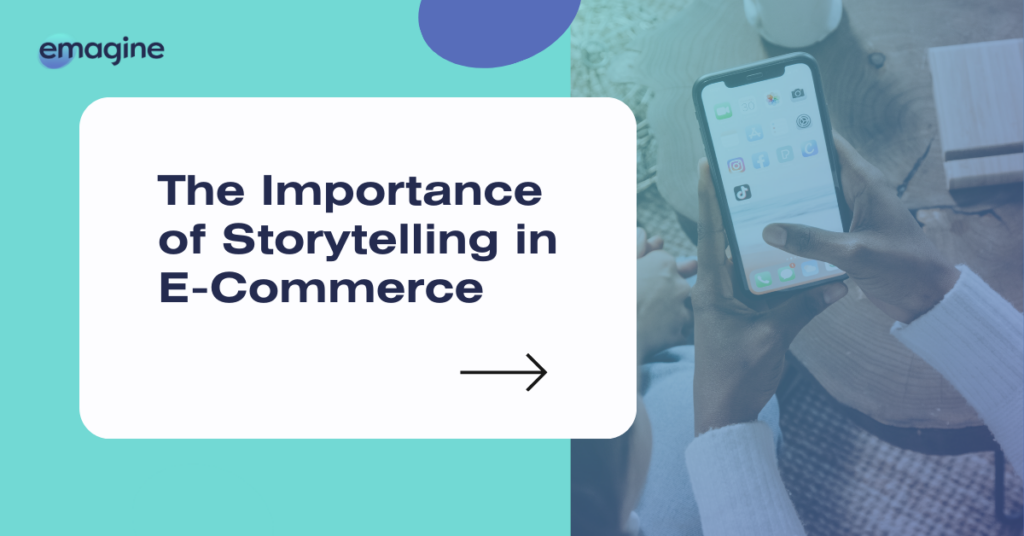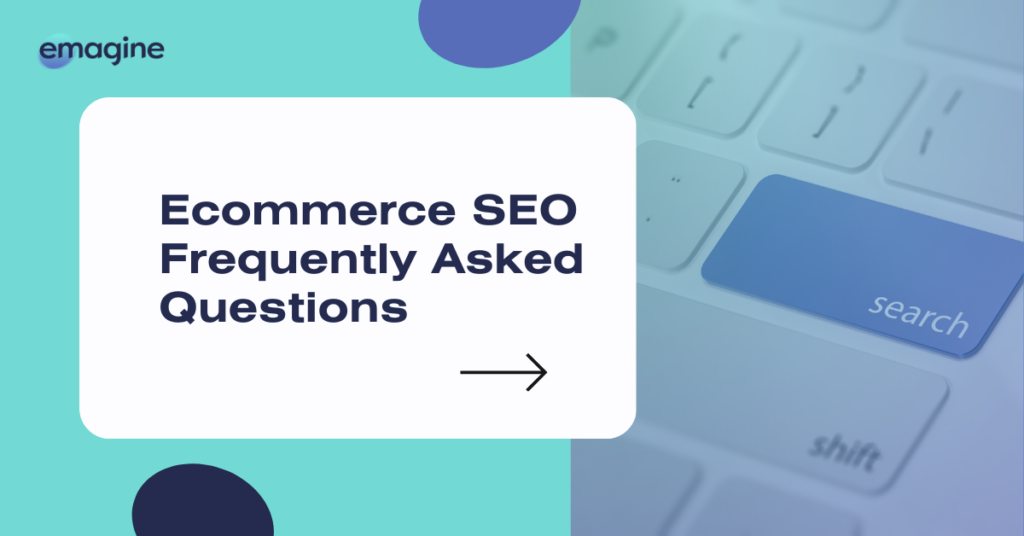In the dynamic world of e-commerce, storytelling emerges as a potent tool to outshine the competition. With a myriad of choices at their fingertips, consumers are more discerning than ever, seeking not only quality products but also a unique shopping experience. Your Shopify store is not just a digital platform to sell products; it’s an opportunity to weave a narrative around your brand, engaging your customers in a manner that goes beyond the transactional.
With storytelling, you can humanize your brand, foster an emotional connection with your audience, and ultimately drive customer loyalty. It’s about creating a compelling shopping experience that customers can relate to.
This guide will serve as your roadmap, offering valuable insights and actionable steps on how to seamlessly integrate storytelling into your Shopify store. By the end of this guide, you’ll be well-equipped to leverage the power of storytelling, providing your customers with an immersive shopping experience that sets your brand apart.
What is Brand Storytelling
So, what is brand storytelling? It is an integral part of modern marketing that involves weaving a compelling narrative around your brand’s identity, mission, and values.
This narrative can be disclosed through different mediums: written content, videos, and pictures, and can be displayed across various platforms and touchpoints. It goes beyond the conventional product specifications and focuses on the meaningful connections your brand shares with its customers.
Brand storytelling is not about what you sell, but why you sell it. It’s about the journey, the experience, and the purpose that led to the creation of your e-commerce business.
When effectively executed, brand storytelling can evoke emotions, inspire trust, and foster a sense of connection. It enables businesses to differentiate themselves in a crowded e-commerce market, providing customers with authentic reasons to choose their brand over others.
Leveraging the power of storytelling can transform your e-commerce website from a mere online catalog into an engaging experience that resonates with your target audience.
Fundamentally, brand storytelling is about crafting a brand persona that connects emotionally with your audience and creating a synergy that fosters a sense of shared values and experiences. This connection deepens the customer’s relationship with your brand, transforming them from mere consumers into dedicated brand advocates.
Through effective storytelling, you can convey your brand’s story in a way that not only captivates your audience but also leaves a lasting impression, firmly establishing your presence in their memories and hearts.
Why Storytelling Matters in Ecommerce
Compelling stories that stir emotions have a lasting impact on people’s memories. By crafting narratives that resonate with customers, businesses can forge a deeper, more meaningful connection with their audience. This is especially crucial in the world of e-commerce, where brand interactions predominantly occur in the digital realm. Establishing such a personal bond becomes even more pivotal in this context — be it joining, buying, subscribing, or even advocating.
Neuroscientists agree that narratives possess a remarkable ability to impact brain chemistry, evoking positive emotions. When harnessed in brand storytelling, this equates to cultivating trust and forging stronger connections with customers.
So, here are 3 main reasons why storytelling is an essential component of your e-commerce brand:
- Emotional Connection with Customers – Stories have a natural appeal to humans, captivating us with their visual and emotional depth. They evoke a wide range of feelings, from joy to tranquility, making storytelling an essential aspect of effective digital marketing.
Through storytelling, brands have the chance to offer customers more than just products or services; they can provide a complete experience. By evoking emotions in your audience, you lay the groundwork for converting them into loyal customers. - Brand Loyalty and Trust – Creating connections with people requires time and effort, and this is no different when it comes to the connection between brands and their customers. This connection is built through shared experiences, meaningful conversations, and establishing trust over time.
The target audience of a brand needs to have a voice in its decisions. When customers see themselves represented in brand stories, it builds trust and shows that the brand truly understands and values them, and is dedicated to meeting their unique needs. - Brand Differentiation – By employing storytelling, brands can effectively clarify their distinctive value propositions. Rather than simply claiming a product is sustainable, for example, sharing the story of its creation, the communities it affects, or the environmental issues it tackles can make the proposition more concrete and meaningful.
In the saturated e-commerce marketplace of today, businesses encounter the daunting task of setting themselves apart from countless similar options. It’s not solely about the product or service anymore; it’s about the narrative that accompanies it.
5 Elements of a Compelling Brand Narrative
Your brand narrative takes shape the moment someone encounters your brand name. It encompasses the services you provide, the principles you uphold, your visual identity, your online presence, and the interactions you foster on social platforms.
Let’s explore the five essential components of brand storytelling, including consistency and genuine representation, understanding your target audience, articulating the challenges you address, shaping your brand persona, and building strong connections within your community.
1. Consistency & Genuine Representation
A brand’s story becomes truly captivating when it is transparent and authentic, revealing the real people and genuine passion that drives it. This transparency creates a profound sense of trust, influencing consumers to choose this brand over seemingly similar alternatives.
When crafting your brand narrative, start by contemplating some fundamental questions:
- What prompted the creation of your brand? Was there an unfulfilled demand that ignited its inception?
- Reflect on the early days of your brand, taking into account key moments that had a substantial impact on its growth, irrespective of whether you’re an established enterprise or a budding one.
- What sets your brand apart from competitors? Is it your unwavering commitment to sustainability, exceptional material quality, or a unique business model? Identify the key factors that make your brand truly special to your customers.
Crafting your brand story involves answering these key questions, which serve as the building blocks. These invaluable insights not only shape your ‘About Us’ page but also inform your social media presence and form the foundation of your marketing strategy. Sharing setbacks or challenges that have shaped your brand adds a layer of relatability and authenticity.
2. Understanding Your Target Audience
Customer needs and pain points are at the core of every successful business. To truly connect with and influence your potential customers, it is essential to have a profound understanding of their preferences and motivations. Insights gained from user research and data play a vital role in resonating with your customers and can guide the narrative elements of your story, encompassing content, design, and product offerings.
Here are the two main approaches to gathering these valuable insights:
- Interacting directly with your customers to understand their preferences and backgrounds. Utilizing platforms such as social media and online reviews can prove advantageous in this regard.
- Examining customer behavior and needs by analyzing their browsing and purchase histories. This data can inform your marketing strategy and allow you to create targeted content that resonates with them.
Utilizing these valuable insights, your objective is to carefully craft a comprehensive profile of your target audience. By delving into their demographics, interests, preferences, and behaviors, you will be equipped to engage with them more effectively and tailor your strategies to their specific needs. This deep understanding will enable you to connect on a deeper level, build meaningful relationships, and ultimately drive greater success in your endeavors.
Remember to take a moment to reflect on the following:
- Who is your primary target audience?
- What are their passions, dreams, and core beliefs?
- What challenges or needs can your brand help them overcome?
3. Highlighting the Solution Your Brand Offers
An impactful brand narrative relies on effectively communicating the unique challenges or issues that your brand tackles head-on. Whether it’s simplifying daily household management or offering sustainably manufactured attire, highlighting this unique solution reinforces your brand’s value proposition. This narrative clarity ensures your audience not only understands the products or services you offer but, more importantly, comprehends the transformative impact they can have on their lives.
When crafting your brand story, remember two things:
- Your potential customers will always ask themselves: ‘What does this do for me?’ Highlight the unique solution your brand offers that sets it apart from competitors, and how it can positively impact their lives.
- While the practical benefits of your solution are important, don’t underestimate the power of emotional benefits — they make your brand more memorable and engaging. For example, if you sell sustainable clothing, the ‘what’ might be the high-quality, eco-friendly materials you use, but the ‘why’ is the feeling of contributing to a healthier planet and future.
Just like traditional e-commerce, social commerce comes with its own set of advantages and challenges. Businesses must understand these aspects to navigate the social commerce landscape effectively and align their digital selling strategies accordingly.
In the following sections, we will delve into the pros and cons of social commerce, providing a comprehensive perspective to help businesses make an informed decision about their online selling approach.
4. Shaping a Relatable Brand Persona
Just as individuals have their unique personalities, brands too require a distinctive persona to be relatable and memorable. This persona, or brand character, is essentially the human aspect of your brand, embodying the values, voice, and behaviors that connect with your target audience on an emotional level.
When forming your brand persona, consider the below:
- Values and Beliefs – What principles govern your brand? These should be deeply ingrained in your narrative and reflect in every aspect of your brand, from product creation to customer service.
- Voice and Tone – Whether it’s playful, authoritative, or empathetic, your brand’s voice should align with your audience’s expectations and be consistent across all communication channels.
- Visual Identity – Your brand’s visual aspects like logo, color scheme, typography, and imagery should all echo your brand persona and be instantly recognizable to your audience.
The reason for cultivating a relatable brand persona is simple — people connect with people, not faceless corporations. A compelling brand persona can humanize your Shopify store, making it more approachable and trustworthy to your customers. This nurtures a deeper engagement with your audience, creating a meaningful relationship that extends beyond transactional interactions.
5. Engaging with Your Community
Engaging with your community is a crucial aspect of establishing a compelling brand narrative. In a world driven by digital interactions, fostering a sense of community can magnify your brand’s visibility and credibility. Social media platforms, forums, and your own Shopify store can be utilized to spark conversations, gather feedback, and involve customers in your brand’s narrative.
When engaging with your community, consider these key points:
- Interactions – Regular interactions with your audience can fortify the relationship between your brand and its community. Respond to comments, address concerns or questions promptly, and show appreciation for their feedback.
- Story Sharing – Encourage your community to share their own experiences with your products or services. Whether it’s a blog post, a product review, or a post on social media, these personal narratives can influence potential customers and strengthen your brand narrative.
- Community Building Activities – Organize activities such as webinars, contests, or live Q&A sessions that provide opportunities for community interaction. These initiatives not only promote engagement but also aid in fostering a sense of community around your brand.
Remember, your brand’s community is not just a target market, but a collective of individuals who share your brand’s values and beliefs. Engagement allows you to show your community that you’re not merely selling a product or service, but are genuinely interested in forming a relationship with them.
Incorporating Storytelling into Your Shopify Store
Make your brand narrative accessible
Consider dedicating a specific page to showcase your brand’s journey and prominently featuring it in your site’s main navigation. This will enable visitors to effortlessly explore and gain a deeper understanding of your enterprise. For example, the “About Us” page can serve as a platform to share the origin and mission of your brand. This is the space where you can delve into the roots of your brand, discuss the challenges you’ve overcome, and articulate the mission that drives you.
Use images, videos, and graphics to complement your narrative
Visuals play a crucial role in storytelling. Exceptional images showcase the craftsmanship of your product, videos demonstrate its usability, and graphics simplify complex ideas into captivating and easily digestible content. By weaving these elements together, you can create a multi-dimensional narrative that appeals to your audience’s senses and emotions, enhancing the customer experience and bringing your brand’s story to life.
Add Customer Testimonials: Real stories from real people
There’s nothing quite like hearing from satisfied customers to make an impact on potential buyers. Harness the power of testimonials that showcase different aspects of your product and service. Share stories that illustrate transformation, satisfaction, or surpassing expectations to provide genuine validation for what you offer.
Blog: Explore topics & share behind-the-scenes insights
Blogging offers a platform to explore topics that are relevant to your brand and audience on a deeper level. It serves as a channel to share stories that may not find a place elsewhere on your website. You can provide behind-the-scenes insights into your production process, narrate success stories, or engage in discussions about industry trends. By delivering valuable content that aligns with your brand’s values, you establish yourself as a thought leader in your niche while fostering a stronger connection with your audience.
Add Product Descriptions: More than just features and benefits.
Crafting compelling product descriptions goes beyond simply listing features and benefits. It involves delving into the story behind the product – how it was made, the inspiration behind it, and the impact it has on users. By using emotive language, you can paint a vivid picture of the customer experience and show how the product seamlessly fits into their life. Incorporating storytelling into your Shopify store goes beyond selling products; it’s about building a brand that resonates and fostering a community of loyal customers.
Case Studies: Ecommerce Brands Excelling in Storytelling
Numerous companies have skillfully integrated storytelling into their brand identity, establishing deep emotional connections with their customers. By weaving narratives that resonate with their target audience, these companies have been able to differentiate their brands amidst the fierce online competition. Here are a few remarkable illustrations:
Nike
With its iconic “Just Do It” slogan, Nike has become synonymous with stories of athletes conquering obstacles to achieve greatness. Through this narrative of unwavering pursuit of success, the brand has forged a deep emotional connection with its followers.
Apple
Apple’s iconic “Think Different” campaign serves as a testament to its mastery of storytelling. By combining evocative visuals and profound words, it effectively cultivated a brand identity synonymous with innovation and uniqueness. Moreover, Apple’s unwavering focus on cutting-edge design positions its products as creative tools for individual expression and artistic endeavors.
Airbnb
At the core of Airbnb’s philosophy of “belonging anywhere” lies a celebration of extraordinary tales from globetrotters who have embarked on remarkable journeys through their platform. By emphasizing the profound emotional fulfillment that comes with travel and the bonds forged through shared adventures, Airbnb’s narrative strikes a profound chord within its community.
These examples underline the significant role of storytelling and how it can take your Shopify store beyond a mere selling platform, transforming it into a powerful conduit for brand loyalty and customer engagement.
Conclusion
Storytelling is far more than a mere marketing strategy; it’s an art that brings your brand to life and forms the essence of your connection with your customers. To truly stand out in the bustling world of e-commerce, it’s critical to foster a brand narrative that resonates with your audience, whether you are an ambitious start-up or a well-established corporation.
From sharing your unique journey on your Shopify store to leveraging customer testimonials and engaging blog posts, every element serves as a chapter in your brand’s grand story. Companies like Nike, Apple, and Airbnb have exemplified the power of storytelling, creating impactful narratives that their customers appreciate and identify with.
As we step further into the digital era, storytelling will continue to play a pivotal role in e-commerce. It’s time to take control of your brand’s narrative and use the power of storytelling to create engaging, lasting relationships with your customers.







